Lacoste fabric, known for its association with the iconic polo shirts, is a versatile and desirable material in the world of fashion.
With its unique properties, such as softness, breathability, moisture absorption, and stretch capabilities, Lacoste fabric offers a comfortable and stylish option for various clothing items.
Whether it’s the renowned polo shirts, t-shirts, dresses, or skirts, Lacoste fabric combines functionality and fashion.
We will explore the characteristics, uses, care tips, and environmental impact of Lacoste fabric, providing you with valuable insights into this popular textile choice.
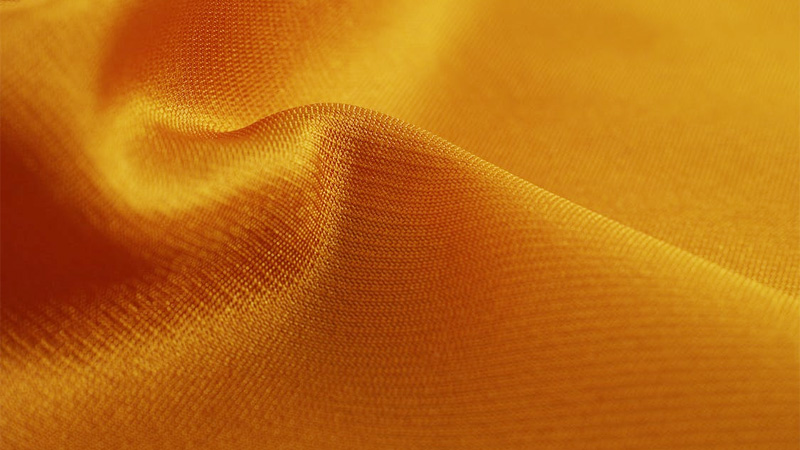
What is Lacoste Fabric?
Lacoste fabric is a type of cotton fabric that emerged in the French textile market in 1933. It is known for its unique characteristics, making it highly desirable in fashion garments.
The fabric is knitted using a loop stitch that is larger than that of regular cotton, giving it a distinct texture. One of the notable features of Lacoste fabric is its 4-way stretch capability, which allows the material to stretch in all directions.
This elasticity enhances the comfort and flexibility of the fabric, making it a preferred choice for creating stylish and functional clothing items.
History of Lacoste Fabric
In 1933, René Lacoste and André Gillier joined forces to establish a brand that would embody René’s passion for tennis and his distinctive fashion sense.
They introduced the inaugural Lacoste shirt, a groundbreaking creation at the time. The shirt was crafted from a lightweight fabric, specifically developed for its comfort and functionality on the tennis court.
This fabric, now known as Lacoste fabric, featured a unique composition and texture that set it apart. The shirt’s minimalist design showcased the iconic crocodile logo embroidered on the left chest, cementing the brand’s identity and becoming a symbol of timeless elegance and sporty sophistication.
Characteristics of Lacoste Fabric
Lacoste fabric possesses several distinctive characteristics that contribute to its appeal and functionality. . .
Here are the key features of Lacoste fabric, explained step by step:
Large Loop Stitch
Lacoste fabric is knitted with a loop stitch that is larger than that of regular cotton. This design element creates a unique texture and appearance.
Cooling Effect
The large loop stitch enhances the fabric’s breathability, allowing air to circulate more freely. This promotes a cooling effect, making Lacoste fabric particularly comfortable in warm weather.
Moisture Absorption
Lacoste fabric has good moisture absorption properties. It can efficiently wick away sweat from the body, keeping the wearer dry and comfortable during physical activities.
Soft and Smooth
The fabric is known for its softness and smoothness against the skin. It provides a pleasant tactile experience, enhancing overall comfort.
Four-way Stretch
Lacoste fabric offers excellent elasticity and four-way stretch capability. This means it can stretch in all directions, providing freedom of movement and flexibility, making it ideal for sports and active wear.
Comfortable During Movement
Due to its stretchiness and flexibility, Lacoste fabric ensures a comfortable fit and ease of movement. It allows the wearer to engage in various activities without feeling restricted.
Suitable for Sports Activities
With its moisture-wicking, stretch, and comfort properties, Lacoste fabric is well-suited for sports activities. It provides the necessary support, breathability, and durability required for athletic performance.
Higher Price Point
One drawback of Lacoste fabric is its relatively higher price compared to regular cotton fabrics. This is due to the specialized production process and unique features it offers.
Weaving Challenges
Lacoste fabric can be challenging to weave due to its larger loop stitch and specific construction requirements. This complexity adds to the production difficulties and contributes to its higher price.
Types of Lacoste Fabric
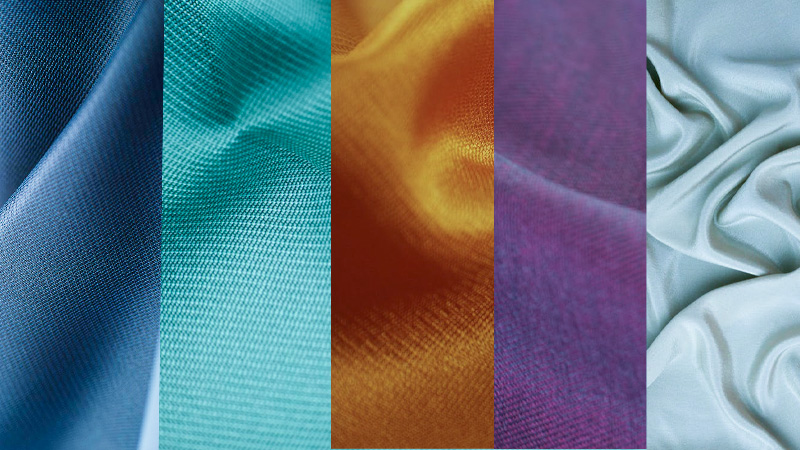
Lacoste fabric, also known as pique fabric, offers various types distinguished by knitting techniques and materials. . .
Here’s a step-by-step breakdown of the different types of Lacoste fabric
Single Lacoste
This type of Lacoste fabric is constructed using a knit-tuck single jersey structure with one set of needles. It showcases a smooth surface similar to single jersey, but with small holes that enhance breathability and lightweight qualities.
It is commonly composed of cotton or cotton blends, providing comfort and softness.
Double Lacoste
Featuring a knit-tuck double jersey structure, double Lacoste employs two sets of needles. One set forms loops while the other creates tucks. This results in a thicker and more durable fabric with a raised texture on both sides.
Double Lacoste can be made using various fibers such as cotton, polyester, wool, or their blends.
American Lacoste (Pique Fabric)
American Lacoste is recognized as pique fabric, exhibiting a knit-tuck double jersey structure. It utilizes different loop and tuck movements, producing a distinctive waffle-like texture.
Compared to single or double Lacoste, American Lacoste is more rigid, less stretchy, and has excellent shape retention properties. Mercerized cotton is often employed in its production, granting it a shiny and smooth appearance.
Poly Lacoste
Poly Lacoste is a type of Lacoste fabric crafted from a blend of polyester and spandex. It offers a four-way stretch capability, providing a soft and elastic feel.
This fabric is resistant to wrinkles and stains, making it suitable for activewear and casual clothing.
What is Lacoste Fabric Made of?
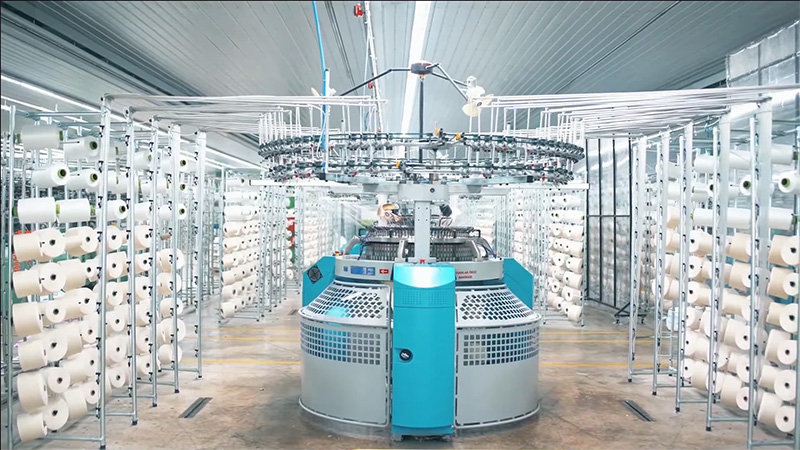
Lacoste fabric is primarily made of cotton, which constitutes 85% of the textile fibers used in the production of Lacoste clothing. . .
Here’s a step-by-step breakdown of what Lacoste fabric is made of
Cotton as the Primary Material
Cotton serves as the key component of Lacoste fabric. It is a natural fiber obtained from the cotton plant and is widely utilized in the textile industry due to its exceptional qualities.
Softness
Cotton is renowned for its soft and gentle feel against the skin. It offers a comfortable wearing experience, enhancing overall comfort and making it an ideal choice for clothing.
Suppleness
Lacoste fabric made of cotton possesses a supple nature. This means it is flexible and pliable, allowing the fabric to drape and conform to the body’s movements, providing ease of wear.
Absorbent and Insulating Properties
Cotton is known for its absorbent properties, capable of absorbing moisture and perspiration from the body. This feature helps to keep the wearer dry and comfortable.
Additionally, cotton provides insulation, helping to regulate body temperature by trapping warmth during colder conditions.
Ease of Care
Cotton fabric is relatively easy to care for. It can withstand regular washing and drying without significant shrinkage or loss of shape. This convenience adds to the practicality and longevity of cotton clothing.
What is Lacoste Fabric Used for?
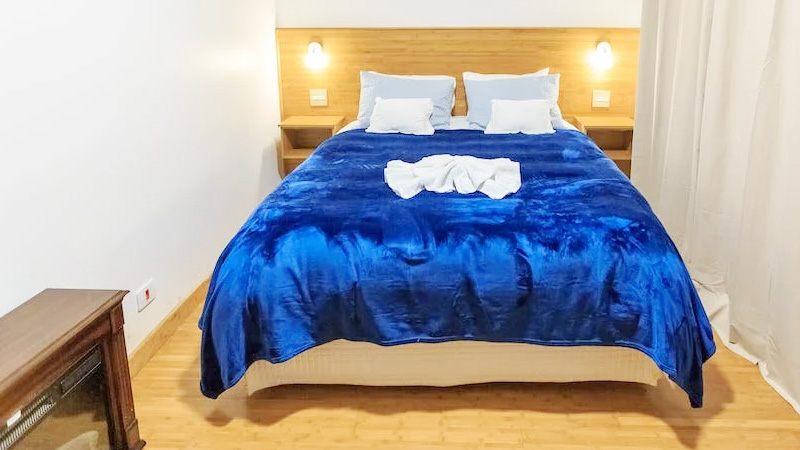
Lacoste fabric finds versatile applications in the world of clothing. While it is commonly associated with polo shirts, uniform t-shirts, and sports t-shirts, it can also be used for other garments.
Here’s an overview of what Lacoste fabric is used for
Polo Shirts
Lacoste fabric is widely recognized as the fabric of choice for polo shirts. Its unique properties, including breathability, moisture absorption, and comfort, make it ideal for this classic and timeless garment.
Uniform T-shirts
Many organizations, schools, and sports teams opt for Lacoste fabric to create uniform t-shirts. The fabric’s durability, easy care, and ability to withstand frequent washing make it suitable for such applications.
Sports T-shirts
Lacoste fabric’s four-way stretch, moisture-wicking capabilities, and comfortable fit make it a popular choice for sports t-shirts. It provides the necessary flexibility and breathability for active pursuits.
Fashion Collar T-shirts
Lacoste fabric is often utilized to design fashion collar t-shirts, which feature stylish collars and are favored for their casual yet refined look. The fabric’s softness and smooth texture enhance the overall appearance and comfort of these garments.
Dresses and Skirts
Although Lacoste fabric is commonly associated with t-shirts, it can also be employed to sew dresses and skirts. The fabric’s breathable nature, ease of movement, and versatility make it suitable for creating comfortable and fashionable dresses and skirts.
Casual Wear
Lacoste fabric is frequently utilized for various types of casual wear, such as loungewear, shorts, and casual pants. Its softness, comfort, and durability make it a preferred choice for everyday clothing items.
How Do You Wash Lacoste Fabric?
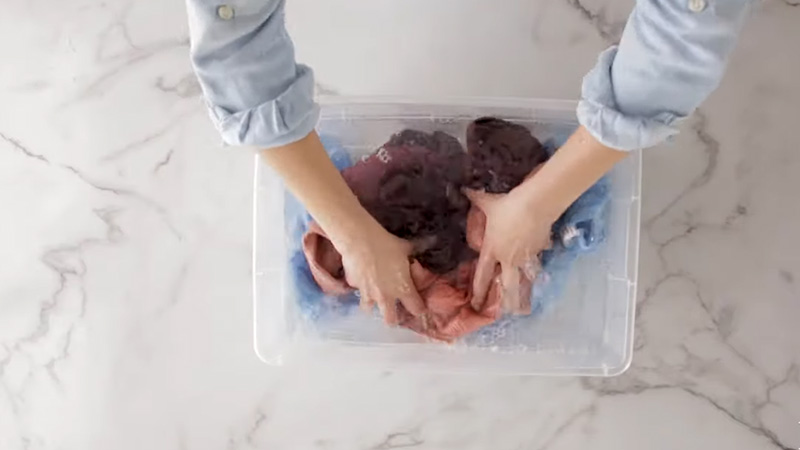
Washing Lacoste fabric, commonly used for polo shirts and other garments, is a straightforward process. . .
Here’s a guide on how to wash Lacoste fabric
Read the Care Label
Before washing your Lacoste fabric garment, always check the care label attached to it. The care label provides specific instructions and any necessary precautions for washing the fabric.
Sort and Pre-treat
Sort your laundry based on color and fabric type. Separate your Lacoste fabric items from heavily soiled or stained garments. If there are any visible stains on the fabric, pre-treat them with a stain remover or a gentle detergent before washing.
Choose the Right Detergent
Lacoste fabric can be washed with your regular laundry detergent. Opt for a mild and gentle detergent, preferably one that is suitable for delicate fabrics.
Machine Wash
Place your Lacoste fabric garment in the washing machine. Use a gentle or delicate cycle, preferably with cold or lukewarm water. Avoid using hot water, as it can cause shrinkage or color fading.
Skip Fabric Softener
It is recommended to skip using fabric softener when washing Lacoste fabric. Fabric softeners can affect the fabric’s suppleness and potentially damage the fibers.
By skipping fabric softener, you help maintain the original qualities of the fabric.
Avoid Overloading
Avoid overloading the washing machine to ensure proper cleaning and rinsing. It is essential to give the garment enough space to move freely during the wash cycle.
Gentle Spin Cycle
Opt for a gentle spin cycle to minimize stress on the fabric. High-speed spinning can cause wrinkles or stretching in Lacoste fabric.
Air Dry
After the wash cycle is complete, remove the garment from the machine promptly. It is recommended to air dry Lacoste fabric items by laying them flat on a clean, dry towel or hanging them on a clothesline.
Avoid using a dryer, as the high heat can lead to shrinkage or damage the fabric.
How to Care for Lacoste Fabric?
Caring for Lacoste fabric, commonly used for polo shirts and other garments, is essential to maintain their quality and longevity. . .
Here are some tips on how to care for Lacoste fabric
Daily Program
Lacoste fabric, made of Petit Piqué cotton, is compatible with your regular laundry routine. Machine wash your Lacoste garments with your usual detergent, following the care label instructions.
Free Fibers
After washing, it’s best to air dry Lacoste fabric garments. Petit Piqué cotton is a mesh-like fabric that benefits from freedom and airflow. Allow your Lacoste items to air dry naturally by laying them flat or hanging them up.
This method helps prevent shrinking and maintains the fabric’s integrity.
Home Laundry
Lacoste fabric typically does not require extensive ironing. However, if ironing is necessary, use a low or medium heat setting on your iron. It is advisable to iron the garment when it is slightly damp or use a pressing cloth to protect the fabric’s surface.
Avoid Fabric Softener
It’s important to avoid using fabric softener when caring for Lacoste fabric. Fabric softeners can hinder the fabric’s natural softness and even cause damage to the fibers.
By skipping fabric softener, you can preserve the original texture and quality of the fabric.
Handle With Care
While Lacoste fabric is durable, it’s still important to handle the garments with care. Avoid excessive pulling or stretching during wear and when laundering.
Treat any stains promptly by following the recommended stain removal techniques or consulting a professional cleaner if needed.
Storage
When storing Lacoste fabric garments, ensure they are clean and dry. It’s best to fold the garments neatly and place them in a cool, dry area to prevent moisture or excessive wrinkling.
Avoid hanging Lacoste fabric items for long periods, as this may cause stretching.
How to Sew Lacoste Fabric?
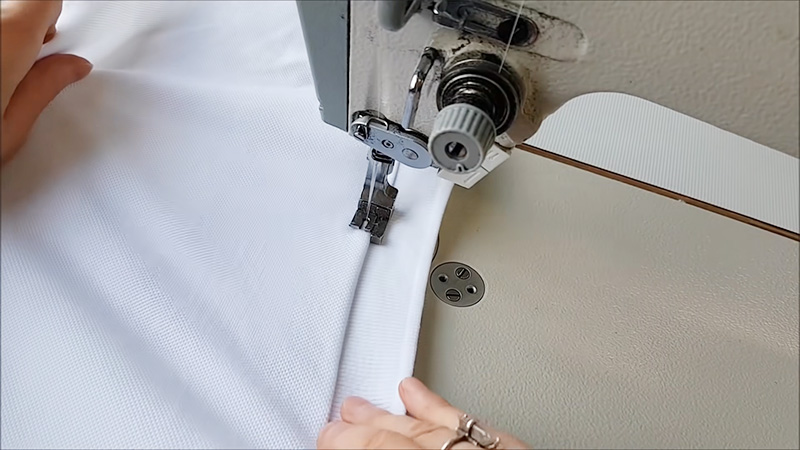
Sewing Lacoste fabric requires some considerations due to its unique characteristics.
Here are some guidelines on how to sew Lacoste fabric
Preparing the Fabric
Before you start sewing, prewash and dry the Lacoste fabric according to the care instructions. This helps to remove any sizing, minimize shrinkage, and ensure that the fabric is ready for sewing.
Cutting the Fabric
Use sharp fabric scissors or a rotary cutter to cut the Lacoste fabric. Take care to cut the fabric with precision, as Lacoste fabric can have a stretch or give to it.
Make sure to cut along the grainline as indicated in the pattern instructions.
Choosing Needles and Thread
When sewing Lacoste fabric, it is recommended to use a ballpoint or stretch needle. These needles have rounded tips that slide between the fabric’s fibers rather than piercing them, minimizing the risk of snags or damage.
For thread, select a polyester or cotton thread that matches the color of the fabric.
Adjusting Tension and Stitch Length
Lacoste fabric has some stretch, so it’s important to adjust the tension and stitch length on your sewing machine. Test the stitches on a fabric scrap to ensure that the stitches are neither too tight nor too loose, allowing the fabric to stretch naturally without puckering.
Using a Stretch Stitch or Zigzag Stitch
To accommodate the stretchiness of Lacoste fabric, consider using a stretch stitch or a narrow zigzag stitch. These stitches provide flexibility and prevent seams from popping or breaking when the fabric stretches during wear.
Seam Finishes
Lacoste fabric does not fray significantly, so seam finishing may not be necessary. However, if desired, you can finish the seams using methods like serging, overlocking, or using a zigzag stitch to prevent any fraying.
Pressing and Ironing
Lacoste fabric is generally resistant to wrinkles, but if pressing is needed, use a low or medium heat setting on your iron. Always test on a scrap piece of fabric first.
It’s recommended to press the fabric with a pressing cloth to avoid direct contact between the iron and the fabric.
Hemming
When hemming Lacoste fabric, you can use a narrow and flexible hem, such as a blind hem or a small rolled hem, depending on the desired finish. These hemming techniques work well with the stretchiness of the fabric.
How Does Lacoste Fabric Impact the Environment?
Lacoste fabric, primarily made of cotton, has certain environmental impacts throughout its production process.
Here’s an overview of how Lacoste fabric can impact the environment
Cotton Production
The cultivation of cotton, including the conventional methods used for growing the crop, can have environmental consequences.
Conventional cotton farming often involves the use of synthetic pesticides and fertilizers, which can contribute to soil degradation, water pollution, and harm to biodiversity.
Additionally, cotton cultivation requires significant amounts of water, which can strain local water resources in water-scarce regions.
Energy Consumption
The manufacturing processes involved in transforming cotton into Lacoste fabric, such as spinning, weaving, and dyeing, require energy.
The energy sources used by textile factories can vary, but reliance on fossil fuels can contribute to greenhouse gas emissions and climate change.
Chemical Usage
In the dyeing and finishing stages of fabric production, chemicals are often used. Improper management and disposal of these chemicals can result in water pollution and harm aquatic ecosystems.
Lacoste, as a responsible brand, should adhere to strict environmental standards and regulations to minimize the impact of chemical usage.
Waste Generation
Textile production, including Lacoste fabric manufacturing, generates waste in the form of scraps, trimmings, and leftover materials.
Proper waste management practices, such as recycling and responsible disposal, can help minimize the environmental impact of textile waste.
Social and Ethical Considerations
While Lacoste fabric itself may not directly involve animal cruelty, the use of leather, wool, silk, and down feathers in some of their clothing pieces raises concerns regarding animal welfare and ethical sourcing.
The sourcing of these materials should adhere to strict standards that ensure the well-being of animals and sustainable practices.
What Are the Advantages and Disadvantages of Lacoste Fabric?
Advantages of Lacoste fabric
- Comfortable: Lacoste fabric, particularly when made with cotton, offers a soft and comfortable feel against the skin. It provides a pleasant wearing experience, making it suitable for everyday clothing.
- Breathable: Lacoste fabric’s construction, such as the use of larger loop stitches, enhances its breathability. This allows for better air circulation, keeping the wearer cool and comfortable, especially in warm weather or during physical activities.
- Moisture Absorption: Lacoste fabric, particularly when made with cotton, has good moisture absorption properties. It can effectively wick away sweat from the body, helping to keep the wearer dry and comfortable.
- Versatility: Lacoste fabric is versatile and can be used for a range of garments, including polo shirts, t-shirts, dresses, skirts, and more. Its adaptability makes it suitable for various styles and occasions.
- 4-Way Stretch: Certain types of Lacoste fabric, especially those with added elastane or spandex, offer excellent 4-way stretch capabilities. This provides flexibility and freedom of movement, making it ideal for sportswear and active clothing.
Disadvantages of Lacoste fabric
- Price: Lacoste fabric, particularly when associated with the Lacoste brand, can be relatively expensive compared to other cotton fabrics. The use of the brand name and the reputation of Lacoste can contribute to higher pricing.
- Weaving Challenges: The larger loop stitch used in Lacoste fabric can present weaving challenges, making it more complex and potentially increasing production costs. This complexity may limit the availability and affordability of Lacoste fabric.
- Animal-Derived Materials: While Lacoste fabric itself may not use exotic animal skins, fur, or angora, the brand does use materials like leather, wool, silk, and down feathers in some of its clothing pieces. The use of these animal-derived materials can be seen as a disadvantage from an ethical and cruelty-free perspective.
- Environmental Impact: The production of Lacoste fabric, especially when it involves conventional cotton farming or chemical-intensive processes, can have environmental consequences. This includes water usage, chemical pollution, and energy consumption, which contribute to the industry’s overall environmental impact.
Comparison Table Between Lacoste Fabric and Other Fabrics
| Fabric | Comfort | Breathability | Moisture Absorption | Stretch | Price Range |
|---|---|---|---|---|---|
| Lacoste fabric | Soft and cozy | Good | Good | 4-way stretch | Moderate to high |
| Pique fabric | Comfortable | Good | Good | Limited stretch | Moderate |
| Jersey fabric | Soft and smooth | Moderate | Moderate | 2-way stretch | Low to moderate |
| Cotton fabric | Soft and gentle | Good | Good | Limited stretch | Low to moderate |
| Bamboo fabric | Soft and silky | Excellent | Excellent | Good stretch | Moderate to high |
| Modal fabric | Silky and smooth | Good | Excellent | Good stretch | Moderate to high |
FAQs
Lacoste fabric, known for its breathability and moisture absorption, can be suitable for hot weather. The fabric’s construction allows for better air circulation, keeping the wearer cool and comfortable. However, it’s always advisable to consider the specific composition and weight of the Lacoste fabric garment for optimal comfort in hot weather.
Lacoste fabric, especially if made with cotton, can shrink if not properly cared for during washing. To minimize the risk of shrinkage, it is recommended to follow the care instructions provided on the garment’s label, including using cold or lukewarm water and avoiding high heat settings in the dryer.
Lacoste fabric, like most garments, benefits from proper care and maintenance. While it can be machine-washed with regular detergent, it is advisable to avoid fabric softeners that may affect the fabric’s suppleness. Additionally, allowing Lacoste fabric items to air dry is recommended to maintain their quality and prevent potential shrinkage.
While Lacoste fabric is commonly associated with casual and sportswear, it can also be used for certain formal or professional attire, depending on the design and style. Lacoste fabric dresses and skirts, when appropriately tailored, can offer a comfortable and stylish option for semi-formal or business-casual occasions.
Lacoste fabric’s eco-friendliness depends on various factors, including the production processes, sourcing of materials, and adherence to sustainable practices by the brand. While Lacoste has taken steps to reduce its environmental impact, such as the use of organic cotton, it’s important to consider the overall sustainability of the garment, including factors like water usage, chemical management, and waste reduction.
To Recap
Lacoste fabric, with its unique properties and versatility, offers a comfortable and stylish choice for various garments. Its softness, breathability, moisture absorption, and stretch capabilities contribute to its appeal and functionality.
Lacoste fabric, primarily made of cotton, provides a pleasant wearing experience and is suitable for a range of clothing items, including polo shirts, t-shirts, dresses, and skirts.
While there are considerations regarding its environmental impact and the use of animal-derived materials in some Lacoste products, the brand’s commitment to sustainable practices and ethical sourcing can help mitigate these concerns.
Leave a Reply